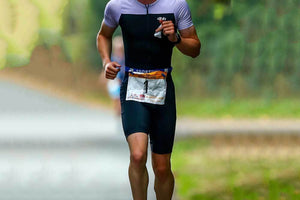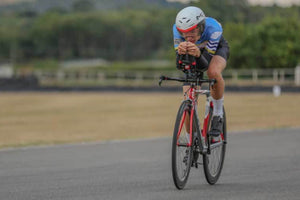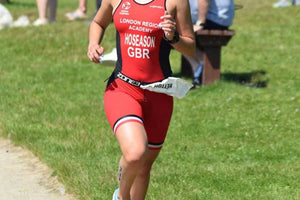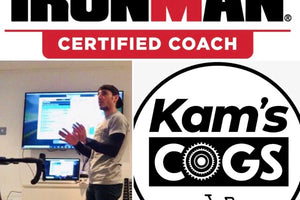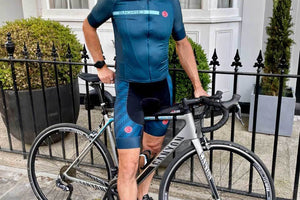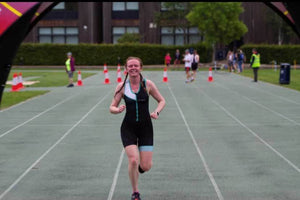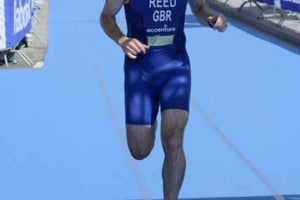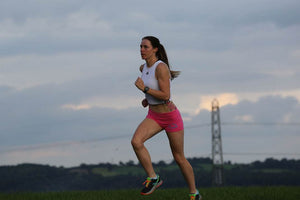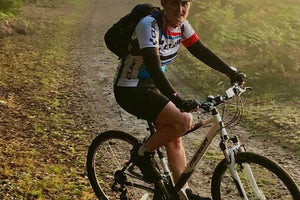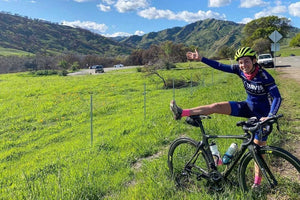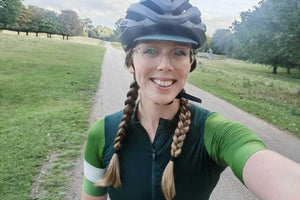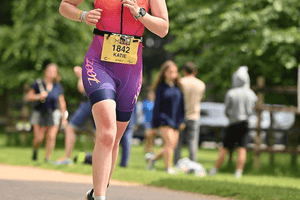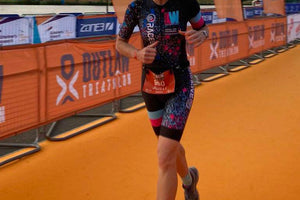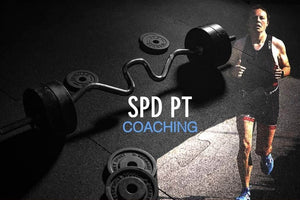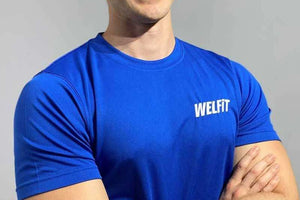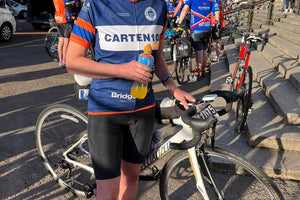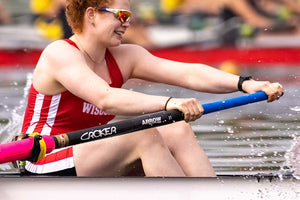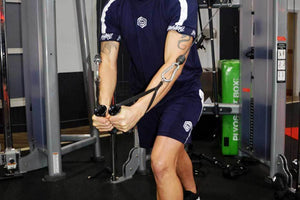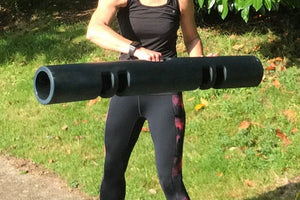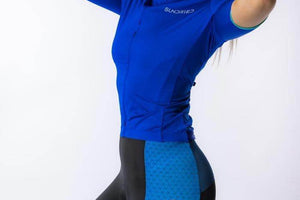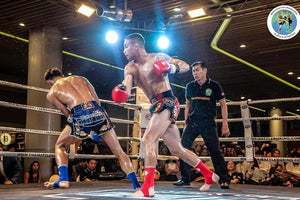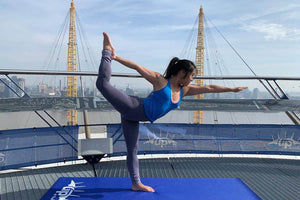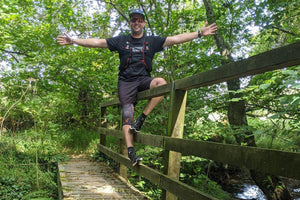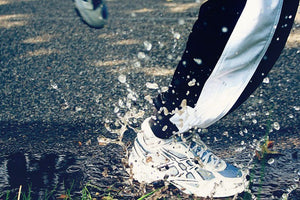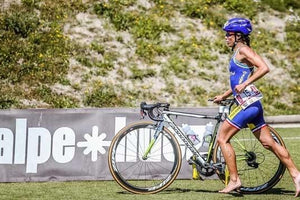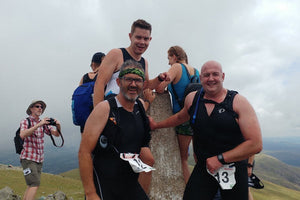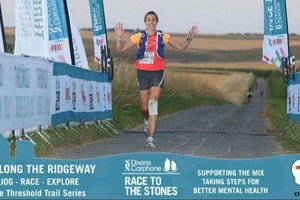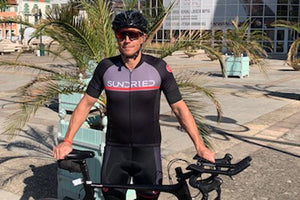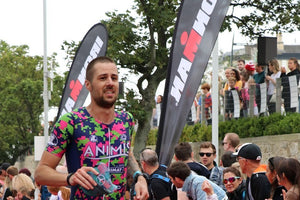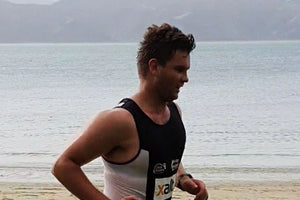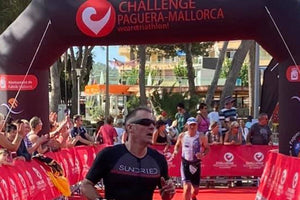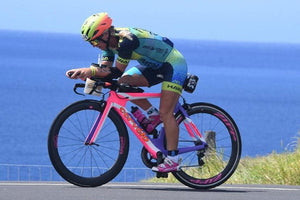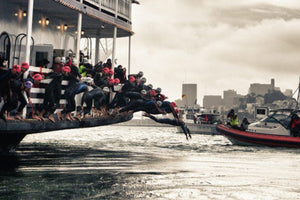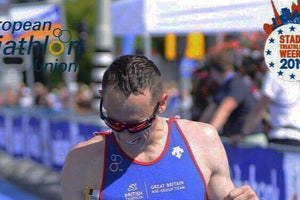On 17th May, after a serious 6-hour brick session, I was saying: "It's great! No races means more training, less recovery but my body is coping extremely well with it. No injuries, not one little niggle. Nothing!"
Not even 24 hours later, I was getting out of the water after an easy open water swim with my training partner, stripping off my wetsuit still in the water and falling a bit awkwardly to my left. Walking to my car, ready to go to physical therapy, I realised a weird sort of pain hitting my left lower back/hip area. Nothing serious, I thought (and hoped). I got a massage and got the area taped very well so the pain was bearable and we were all of the belief it would be gone in a few days.
The next day, I had another open water swim in the morning, a stability workout right after that, followed by a bike ride and – late in the evening – a run which was around 25km. Because of the tape, the pain wasn't there from the start but it kept coming harder and harder and I was glad I finished the run.
I finished the training week, hitting every session – including interval running on Sunday. The pain was at a 10 out of 10 during the cool down run so I decided to walk the last few hundred meters to my house. I knew there must be something wrong.
The next week, a recovery week, we decided to take a break from running for at least 3 days. I took 7 days – something I had never done before.
On day 8, after taking some painkillers throughout the week, I thought the pain was gone, or at least, on its way. It wasn't. A 5km run almost left me crying because of the pain after I finished. Again – I knew there must be something wrong. Really wrong.
I kept training on the bike and in the water as much as possible but the pain was constantly there. Never as bad as during the running but, it was there.
I decided to give running a go here and there and – after seeing an osteopath who suggested it was down to some bowel thing and that it should be gone in 2 or 3 days (he was right about the first, but not about the 2-3 days sadly) – I wanted to do my brick session of 4 hours on the (indoor) bike followed by an hour run at Ironman race pace (3.55 min/km).
After 4 hours on the bike – no pain. Nothing. Great! Off on the run, it came and it went from bad to worse to the point where I had to just stop after 10k, again walking back home. This time, I decided that enough is enough. There is something seriously wrong.
I went to a hospital nearby (it was a Saturday) hoping for a chance to get an MRI or CT scan as I suggested it might be a stress fracture in my sacroiliac joint and I knew that this would be the only way to find out.
The doctor sent me back home – having not done any more than putting his hands on my back, trying to feel an injury. He suggested that I could resume training after 3 days as it's surely nothing serious. He knew. At least he said that he knew. He knew nothing, as turned out.
A day later, after barely being able to get out of bed – let alone walk down the stairs – I decided to give it another shot. Another hospital. This time I got lucky: I could stay at the hospital for one night, having been promised a scan the next morning.
Even then, one of my doctors – a great doctor and really good guy as it turned out, a triathlete himself – suggested that the SJ-stress fracture was “the only thing we can exclude.”
Two hours later, he came in with an apology and crystal clear MRI scans in his hand, showing an injury that I had only seen on Jan Frodeno or Lionel Sanders' Instagram accounts.

Wow, what a crazy 24 hours. From running a painful sub 4 min/km for 10k, to being out for the foreseeable future. For me, it was quite a mix of emotions: a slap in the face but also a moment of relief. Clarity – finally. And finally no one doubted that there was a real injury. From that moment, there weren't any problems getting more scans, physical therapy prescriptions and regular talks to my doctors in order to get this done successfully.
I think it's important to share experiences like this as there will be other athletes with symptoms similar to mine, so here's my advice: if you feel or think that it's serious, be persistent in your communication with doctors in order to clear the situation and find out what's really going on with your body.
A stress fracture like mine can happen to anyone – from the very best athletes like Frodeno, to a spare time runner. It might be overtraining, it might be a couple of nights poor sleep, it might be bad nutrition for a couple of days, moving house or just a mix of it.
I'm now seven weeks post-diagnosis and here are some thoughts on how to handle an experience like that:
My first thought was that it might be great to (finally) take a break after long and hard sessions week in week out, getting some wine and ice cream (which I did on the first night after returning home from the hospital) and taking it easy. But that doesn't work.
You have to keep your nutrition as good as possible as the body needs a lot of energy to repair damage. Things like alcohol will only slow down the healing process, which is the last thing I would want. I had three days in my 7 weeks with a bit of wine, no more. Yes, I went for the odd chocolate, ice cream or so as that was just necessary to improve my mood at times.
The biggest thing was the lack of movement. My body (and brain) is used to working out every day. Getting up early, training, eating, having a nap, training, eating, sleeping and doing it all again the next day. I wasn't doing anything for 9 days, starting to get some short walks with the dog after that. Still, it was 16 days without any sort of training. No bike, no swim, no run. Nothing. The first scan after two weeks showed improvements, I was allowed back on the bike and back into the pool. Both only at very low intensity and not longer than an hour per day, but it was helping my head a lot.
Also, I introduced my girlfriend to cycling. I rebuilt one of my bikes for her and we started doing our “ice-cream-tours”. Something like 20km, very easy and with a stop at our favourite ice cream place in the middle. Great for both of us! What really helped me during that time, though, was getting my coaching company “GET Active” to life. That was initially planned for the winter but I realised that my off-season was now. So, I tried to sleep longer in the morning as sleep would help my injury and would do a lot of office work afterwards. One hour of “sport” per day.
Fast forward to week 7: After another scan and a talk with my doctor, I was allowed to do a little bit more cycling, a little bit more swimming and doing some strength workouts again but, most importantly for me, I was allowed to get on the treadmill twice a week for walking with 3x2 minutes easy running.

I felt some discomfort in the area that wouldn't be there normally but, apparently that's not the fracture, but more the fact that everything around it has weakened.
So, getting on the treadmill, I was sort of nervous that it would all begin again. I was glad I was wrong. The running felt good, despite feeling rusty, unfit and almost overweight. But the best feeling was, that after stepping down, no pain came back. No sensations, no strains.
I'm glad I've been able to take my first steps now and can go on from here. I'm taking it day by day and week by week. Patience (my biggest weakness by the way) has been the most important factor in the whole process and I know, that wanting to much too soon could take me back a week or two very quickly.
This is also an advice I want to give for other athletes, coming back from an injury, coming back from a long off-season or just for people who want to get (back) into sport: Don't rush it. It will all come but it won't come faster just because you want it faster.
Do your training, take your breaks and always remember: recovery is key. Train, eat, sleep, repeat. Don't just train and repeat.
For me, I've accepted the situation that my season is over before it began this year. I hope to be back in early 2021. After all, this is my December now, so why shouldn't next January be my summer? I try to be in in top form in January/February, hoping that races will take place and I'll be a better athlete than before.
At least one thing is for sure: I'll never take pain-free running for granted anymore and be super grateful when I'm back to full fitness, getting back in some sort of form and getting back for race preparation. Here's to 2021!
About the author: David Rother is a German professional triathlete who competes at full and 70.3 distance.





